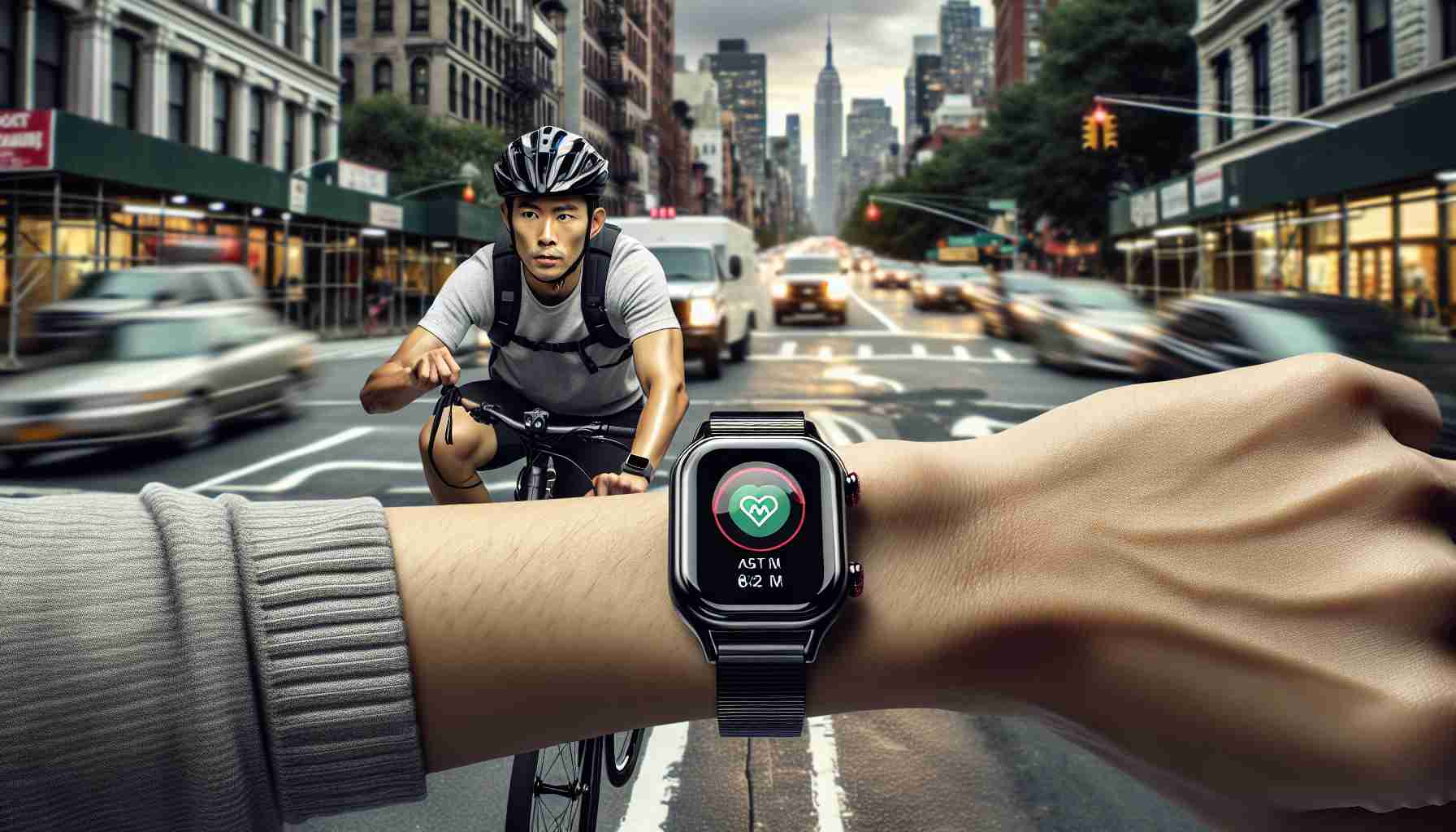A 49-year-old New York City cyclist, Eric Zollinger, owes his life to the advanced technology of his Apple Watch after a perilous encounter with a concealed pothole that almost proved fatal. Zollinger was cycling home in adverse weather when the incident occurred, catapulting him off his bicycle and onto the hard pavement. He attempted to carry on before noticing he was bleeding significantly from his nose and subsequently collapsing in his bathroom.
The quick-trigger technology of Zollinger’s wrist gadget was critical in this nerve-racking situation. Its fall detection system immediately noticed the accident and took decisive action. The Apple Watch automatism kicked in, it placed an emergency call that connected the injured cyclist with a 911 operator. As Zollinger came to, he was greeted by the operator through his watch, asking after his health and readying emergency support.
Displaying a mixture of astonishment and appreciation, Zollinger later praised the device’s quick-witted response. He was keenly aware that without the smart intervention of his watch, the outcome of his accident could have been much direr.
This technology is designed to assist during such emergencies by vibrating, sounding an alarm, and asking for the user’s response after a fall. If the user fails to respond, the watch escalates to the next safety protocol by reaching out to emergency services and listed emergency contacts without delay, serving as a guardian in times of crisis.
Relevant Facts:
Smartwatches like the Apple Watch have increasingly become sophisticated gadgets that go beyond their initial design for communication and fitness tracking. They now often include health monitoring features such as heart rate sensors, ECG, and fall detection. These features can detect irregular rhythms that may indicate atrial fibrillation, track workouts and daily activities, and call for help in case of a fall when the user might be incapacitated.
An important fact to note is that the Apple Watch’s fall detection feature is automatically enabled for users aged 65 years and older, but it must be manually activated by younger users.
Additionally, the Apple Watch’s Emergency SOS feature allows a person to share their location with emergency services, which can be crucial in a situation where an individual is unable to provide these details themselves.
Furthermore, these advanced systems rely heavily on sensors, algorithms, and connectivity. For example, the Apple Watch uses an accelerometer and a gyroscope to detect falls, which rely on a significant amount of data analysis to determine whether a fall has occurred.
Key Questions and Answers:
– How does the fall detection on a smartwatch work?
Fall detection works by using sensors like an accelerometer and gyroscope to monitor a user’s wrist motions. These sensors detect sudden movements or impacts indicative of a fall. If such motion or impact is detected, an alert is issued and the user is prompted to respond. If there is no response after a certain period, the device automatically contacts emergency services.
– What are the key challenges associated with fall detection technology in smartwatches?
One challenge with fall detection technology is avoiding false positives while still ensuring genuine falls are detected reliably. The sophisticated algorithms must differentiate between normal activities and actual falls, which is not always straightforward.
– Are there any controversies associated with these features?
Privacy can be a concern for some users, as these watches are collecting sensitive health and location data. There are also concerns about data security and how this personal information is protected or possibly shared.
Advantages and Disadvantages:
Advantages of such smartwatch features include the potential to save lives during emergencies like Zollinger’s and to monitor health more closely, potentially leading to earlier detection of medical issues.
However, disadvantages may include false alarms, possible invasion of privacy, the need for constant charging to ensure the watch is operational when needed, and the cost of acquiring such sophisticated devices.
Related Links:
If you’re interested in learning more about the technology behind smartwatches and the range of features they offer, visit:
– Apple
Please note that this topic is associated with rapidly evolving technology, and the features described may differ in newer models or from those provided by other smartwatch manufacturers.
The source of the article is from the blog maestropasta.cz
